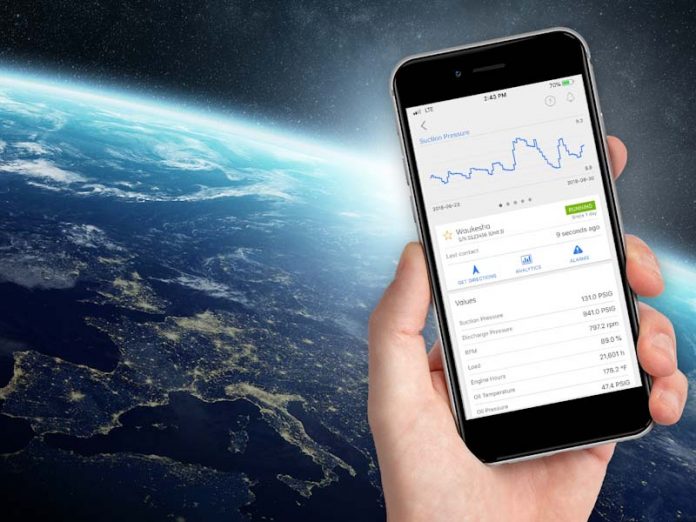
INNIO Waukesha Gas Engine’s myPlant isn’t a new analytical platform, at least not in the power generation industry. For the past decade, myPlant has provided those operators with an inside look at the health and performance of their engines as well as their power plants.
But engines, especially those supplied by INNIO, can be used beyond the power generation sector, which is why the company has spent the last three years helping myPlant gain traction in the gas compression landscape.
Today, myPlant serves as a data-gathering system for engines, compressors and other equipment, allowing users to monitor and optimize the performance of their operations.
“It’s remarkable to be able to combine the engine and compressor analytics into one suite,” said Jason Padilla, the vice president of marketing and business development for INNIO Waukesha. “Many other analytical platforms don’t have the expertise on the engine, just the compressor. To have both gives the user significant total compressor package reliability. Bringing those two things together (engine and compressor analytics) is a game changer.”
myPlant is a cloud-based platform with analytical services. The data-collecting module connects to an operator’s existing controls system. From here, the module obtains data from the operator’s preestablished sensors and streams that information through a secure gateway – either a local internet connection or through an INNIO cell router – to the myPlant cloud. Once in the cloud, INNIO runs analytics on the data streams, which users can access through a mobile app or computer.
“The system is OEM agnostic,” Padilla said. “Literally anything, including your washing machine at home, can be connected and viewed through myPlant.”
myPlant, which provides real-time monitoring, can collect any data imaginable from a piece of equipment, Padilla said. Applicable data for an engine or compressor includes temperature, pressure, vibration, oil and coolant reports, which allows for condition-based maintenance predictions.
Additional analytics, especially those designed to resolve potential issues, include valve condition detection, bank-to-bank imbalance, remaining useful oil life and exhaust gas spread monitoring.
While having a detailed vantage point on any piece of equipment is useful, Padilla said one of the major benefits of having myPlant on a compressor package is its ability to detect the condition of the compressor’s valves.
According to INNIO, undetected compressor valve conditions can cause operators to lose more than 12% of their available flow capacity. Through an INNIO analysis of more than 50 end-user compressor packages, more than 20,000 combined hours of run time were lost in 2017 due to compressor valve events. These hourly losses amounted to annual revenue hits from US$8000 to US$100,000 of gas flow per package.
With the ability to instantly detect the condition of a compressor valve, an operator can avoid costly flow losses and unexpected shutdowns, Padilla said. Operators can also use myPlant to run condition-based maintenance schedules instead of daily infrared scans.
“The industry views the compressor as the revenue-generating tool in the package,” he said. “We want them to improve the performance of their packages and reduce their overall costs.”
Optimization is another aspect of myPlant. Operators can use the proprietary INNIO gas engine algorithms to estimate and adjust the load on their compression packages using existing sensors. With the ability to increase or decrease load instantly, operators can optimize their compression packages based on site operating conditions.
Another benefit of myPlant is the operator’s ability to write their own analytics. Having this open-source capability means the user can shape the analytics to set personal parameters specific to their data-collecting needs.
“Users can write their own alerts and triggers that will go off when certain patterns are hit,” Padilla said. “Everyone has their own ways of operating their equipment. This allows them to tweak and optimize their performance.
“This feature is designed as a drag, drop, click feature so it is easy to use and requires no programming or data science experience,” he said. “It allows the user to translate real-world knowledge into an analytic with minimal effort.”
myPlant is also safeguarded against the speed of technology, which tends to outdate analytical platforms quickly. Updates for myPlant occur quarterly with new features released every three months. An example of this comes from a 2019 update that added automated compressor valve failure detection to the platform. This update, like the others preceding it, does not require new sensors or significant hardware upgrades, Padilla said.
“As we develop these new analytics, it makes myPlant fresh and up to date with all the new technology that we build,” he said, adding that forthcoming 2020 updates include a new dashboard, fuel quality predictor, flow balance and a rod load calculator.
The wealth of updates allows myPlant to stay relevant in the industries it serves, Padilla said.
“You need all those analytics,” he said. “The more data you’re pulling in, the more you can refine and predict what will happen to your equipment in the future. If you’re only monitoring a select few analytics, you’re limiting your capabilities.”

